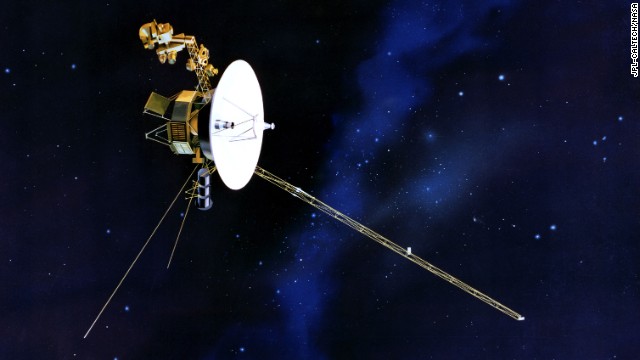
As NASA scientists report that Voyager 1 has left the solar system, take a look at some of the amazing images the probe has provided its earthbound audience.
In 1519, Portuguese explorer Ferdinand Magellan launched the expedition that completed the first circumnavigation of the globe. And so humanity learned the full extent of its world.
This week, we learned from Science magazine that NASA’s Voyager 1 spacecraft — currently the man-made object farthest from Earth — crossed a boundary of the solar system and entered interstellar space sometime last summer.
Like Magellan’s voyage, Voyager’s achievement is a major milestone in human exploration. In a remarkably short time by cosmic standards (the universe being 13.7 billion years old), humans have evolved to the point of sending robotic diplomatic missions to other planets and stars.
This particular emissary from the human race carries a recording of greetings in 55 languages as well as images explaining who we are. Although the Voyager scientists had no particular expectation of encountering other civilizations, they knew the mission would go forth unimpeded for millenniums. So they prepared a message for any distant future being who might stumble across this man-made artifact.

Jupiter, its Great Red Spot and three of its four largest satellites are visible in this photo taken February 5, 1979, by Voyager 1.
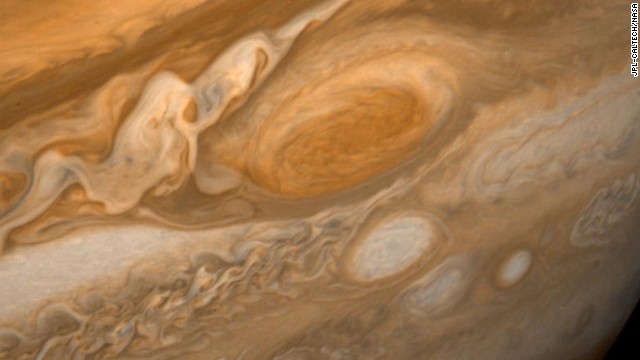
A dramatic view of Jupiter's Great Red Spot and its surroundings was obtained by Voyager 1 on February 25, 1979
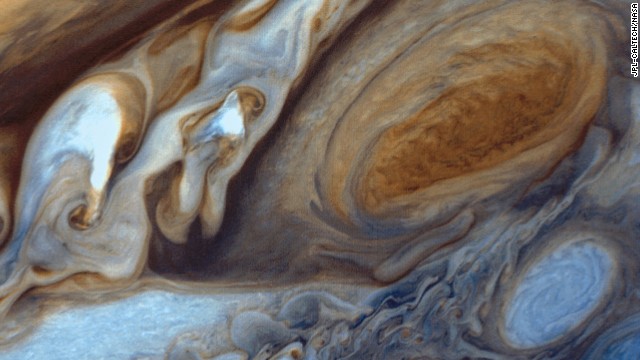
This image of Jupiter was assembled from three black and white negatives from different color filters and recombined to produce the color image.
If “E.T.” finds Voyager 1, will it phone home? We know that planets around other stars (“exoplanets”) are abundant, and that when liquid water and carbon-based compounds and an energy source are present, life arises easily. But the kind of intelligent life that can build and launch a pioneering spacecraft is surely much more rare. And if someone answers the call, it will be sufficiently far in the future that the Earth-bound world as we know it will have changed beyond recognition.
Unlike missions to nearby Mars or Venus, Voyager 1 and 2 (both spacecraft were launched in 1977) and their older siblings, Pioneer 10 and 11 (launched in 1972 and 1973, respectively) headed for outer space from the beginning. They visited Jupiter, Saturn, Uranus and Neptune, taking photographs of unprecedented clarity and making complex measurements of the particles and magnetic fields around the planets.
Voyager 1 is the fastest-moving and most distant of the four spacecraft. Data collected by its remaining instruments have been interpreted by scientists as indicating a crossing of the boundary between our solar system and interstellar (“between the stars”) space. It’s not a sharp boundary, and there are definitely no signposts, so there has been some debate about the exact moment of transition.
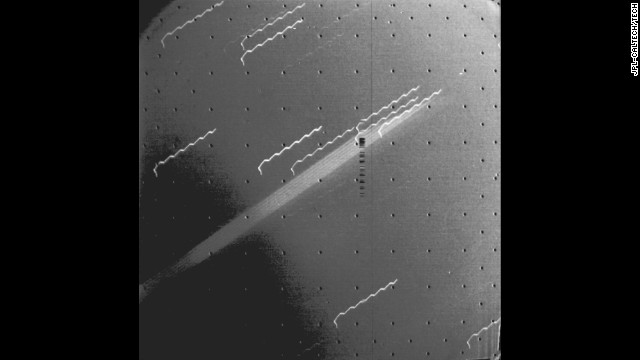
Voyager 1 captured the first evidence of a ring around the planet Jupiter. The multiple exposure of the extremely thin faint ring appears as a broad light band crossing the center of the picture. The background stars look like broken hairpins because of spacecraft motion during the 11-minute exposure. The black dots are geometric calibration points in the camera.
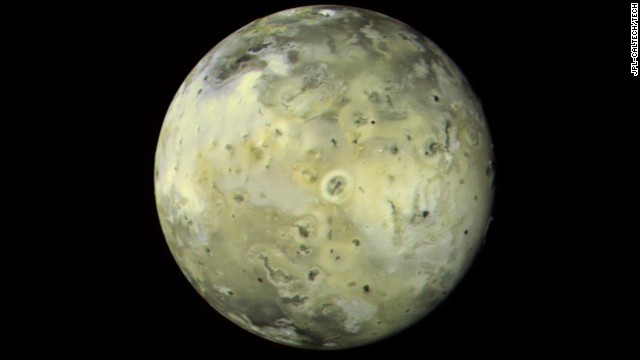
This mosaic image of Jupiter's moon Io shows a variety of features that appear linked to the intense volcanic activity. The circular, doughnut-shaped feature in the center has been identified as a known erupting volcano
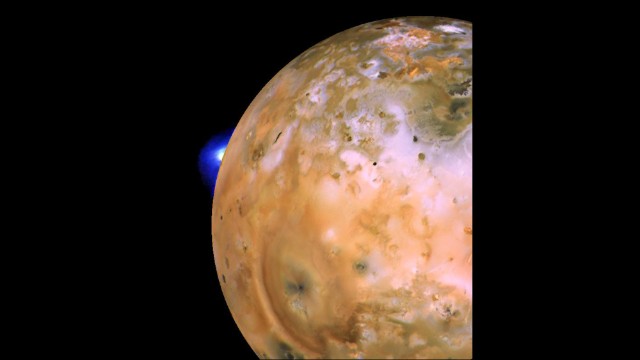
Another image of Io shows an active plume of a volcano dubbed Loki.
In fact, the exact date doesn’t matter. Whether it was July 2012 or August 2012 or even months earlier or later, humans have unquestionably projected their presence well beyond any previous location.
It’s a bit different from Magellan’s voyage, however. In those ancient days, travel was the only way to investigate the world. Today we survey our world — and a large fraction of the observable universe — using powerful telescopes, on the ground and in space.
Very deep exposures taken with the Hubble Space Telescope have revealed that the Milky Way galaxy is but one of a trillion galaxies in the observable universe.
There are hundreds of billions of stars in the Milky Way galaxy alone, each of which could have a system of planets orbiting around it. Some of these are likely to harbor life, albeit of a primitive form.
In terms of knowing our 21st-century world, NASA’s robotic scientific satellites have made huge advances. And from the ground, telescopes study exoplanets and the SETI Institute searches for extraterrestrial intelligence using a large radio telescope array in California. In terms of receiving signals, Earth-bound and near-Earth telescopes are unsurpassed.
In terms of outward communication, TV signals created decades ago have long since announced our presence — in fact, because such signals travel at the speed of light, they left the solar system only days after the initial broadcast.
But in terms of pieces of metal human hands have touched, Voyager 1 is unique. Now some 36 years and a few days after it was launched into space, more than 1 billion miles from the sun, traveling at 38,000 mph, Voyager 1 will doubtless travel onward for tens of thousands of years to come.
Its power source won’t last nearly that long. Voyager 1 has sufficient power for remaining instruments through at least 2020, and if some are turned off to conserve power, a single instrument could last another five years afterward. But then the “little spacecraft that could” will go silent.
Forty thousand years from now, after traversing 10 trillion miles or so of interstellar space, Voyager 1 will approach the then-closest star, AC +79 3888. At that point it will be a ghost ship, representing an old civilization, gone but enshrined forever in the golden record.
As John Grunsfeld, NASA’s associate administrator for science in Washington, said, “Perhaps some future deep space explorers will catch up with Voyager, our first interstellar envoy, and reflect on how this intrepid spacecraft helped enable their journey.”
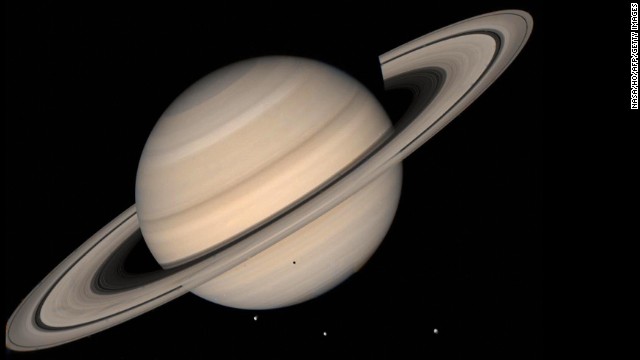
This August 1998 NASA file image shows a true color photo of Saturn assembled from the Voyager 2 spacecraft.
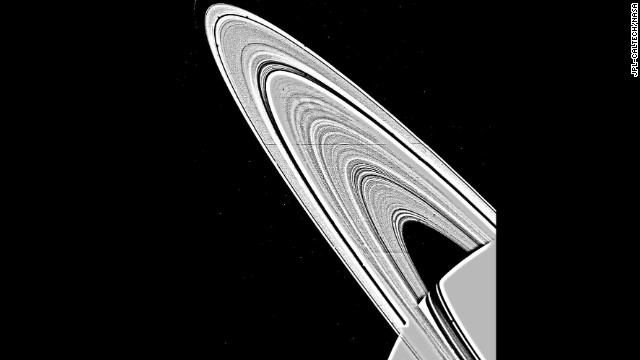
A mosaic image of Saturn's rings, taken by NASA's Voyager 1 on November 6, 1980, shows approximately 95 individual concentric features in the rings. The ring structure was once thought to be produced by the gravitational interaction between Saturn's satellites and the orbit of ring particles, but has now been found to be too complex for this explanation alone.
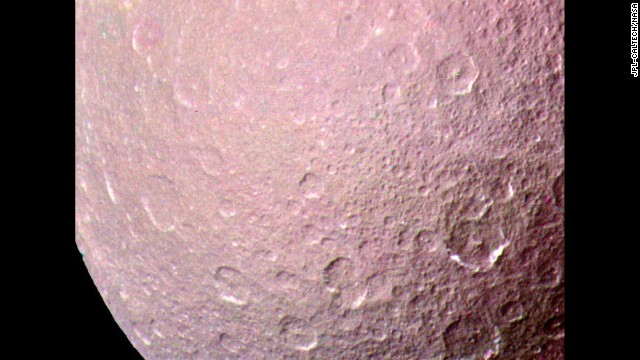
This image of Rhea, the largest airless satellite of Saturn, was acquired by the Voyager 1 spacecraft on November 11, 1980.

The cratered surface of Saturn's moon Mimas is seen in this image taken by Voyager 1 on November 12, 1980. Impact craters made by the infall of cosmic debris are shown; the largest is more than 100 kilometers (62 miles) in diameter and displays a prominent central peak.
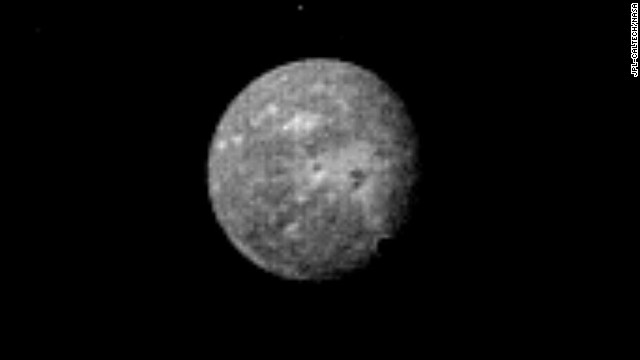
Uranus' outermost and largest moon, Oberon, is seen in this Voyager 2 image, obtained January 22, 1986,

This image of Earth, dubbed "Pale Blue Dot," is a part of the first "portrait" of the solar system taken by Voyager 1. The spacecraft acquired a total of 60 frames for a mosaic of the solar system from a distance of more than 4 billion miles from Earth. Earth lies right in the center of one of the scattered light rays, which are the result of taking the image so close to the sun.
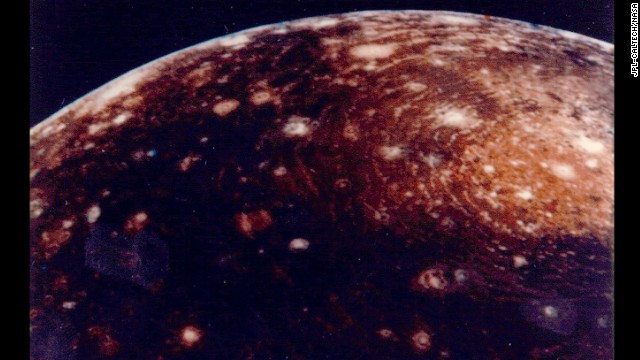
This image of Jupiter's moon Callisto was captured from a distance of 350,000 kilometers. The large "bull's-eye" at the top of the image is believed to be an impact basin formed early in Callisto's history. The bright center of the basin is about 600 kilometers across and the outer ring is about 2,600 kilometers across.

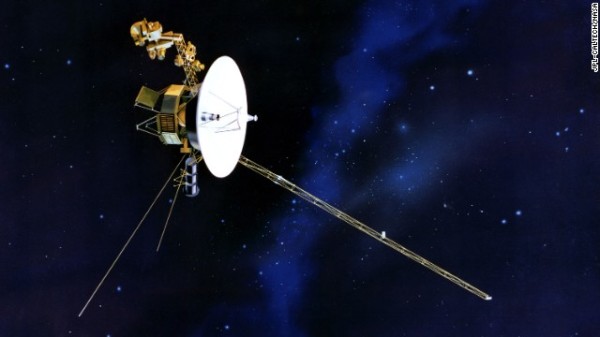

Leave a reply